The Da Vinci Code| 2006
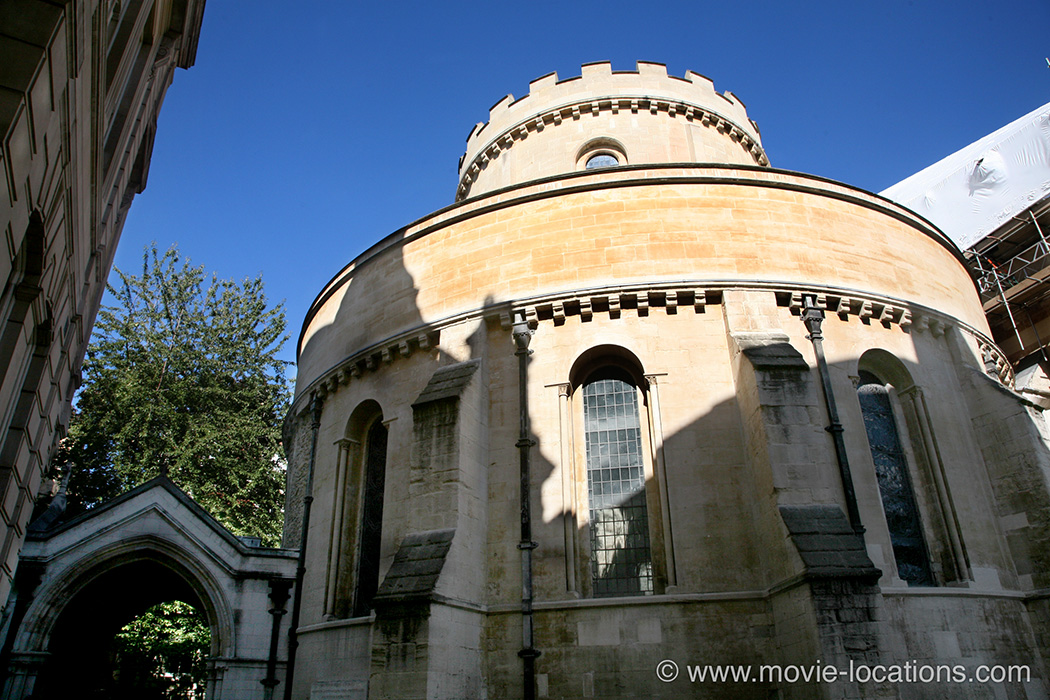

- Locations |
- Paris, France;
- London;
- Leicestershire;
- Hampshire;
- Surrey;
- West Sussex;
- Lincolnshire;
- Scotland;
- Malta
- DIRECTOR |
- Ron Howard
Discover where The Da Vinci Code (2006) was filmed in France, the UK and Malta; including the Louvre and St Sulpice in Paris; Chateau Villette; Westminster Abbey; Lincoln Cathedral; Fairfield Halls Croydon; and Rosslyn Chapel and Roslin Castle in Scotland.

Before Ron Howard's film was released, there was already a Da Vinci Code trail based on Dan Brown’s blockbusting holiday-read and, while many of the book’s locations are faithfully used, the filming sites sometimes diverge.
Film-makers are subject to all kinds of practical considerations which don't bother the writer. And so the supposedly ‘Parisian’ lecture hall, in which ‘Professor of Symbology’ Robert Langdon (Tom Hanks) is giving a lecture to promote his book, can be found in southeast England. It’s the Concert Hall of Fairfield Halls, Park Lane, Croydon in Surrey.
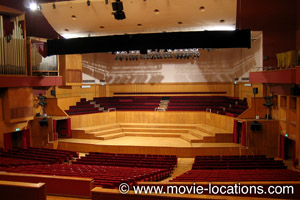
Opened in 1962, the famed arts, entertainment and conference venue, which also houses an art gallery and the Ashcroft Theatre, achieved fame in the 60s when bands including Traffic and The Nice recorded live albums here.

If you’re going to chastise the flesh, you might as well do it in an apartment with a charming view of Sacre Coeur. The Parisian base of Opus Dei monk Silas (Paul Bettany), where he gets his sinister order to “Go forth” can be seen on the southwest corner of rue Becquerel and rue de la Bonne, Montmartre, just to the north of the famous church.
Although Langdon’s lecture is in England, It is the real Louvre to which he’s summoned to help solve the riddle of Jacques Saunière’s death. Built on the site of a 12th century fort, the Louvre, now claimed to be the most visited museum in the world, was once a royal residence. After Louis XIV relocated the court to Versailles in 1682, the palace was used to display the royal art collection, and the French Revolution saw it finally transformed into a public museum.

IM Pei’s landmark glass Pyramid above the entrance – “a scar on the face of Paris” according to detective Bezu Fache (Jean Reno) – was added in 1988, and the inverted Pyramid beneath finally added in 1993. What does Fache know? Visit after dark and walk among the reflecting pools to see the illuminated Pyramid at its most seductive.
The Da Vinci Code was not the first film to shoot inside the Louvre: Audrey Hepburn poses for a fashion shoot here in Funny Face; Vanessa Redgrave is awed by its statues in biopic Isadora; Jean Luc Godard’s anarchic trio scoot through the galleries in Bande a Part – a scene later recreated in Bernardo Bertolucci’s The Dreamers; more reverentially, its artworks are admired in Les Amants du Pont Neuf and in Martin Scorsese’s The Age of Innocence.
Although the Louvre's courtyard briefly appears at the beginning of Wonder Woman, London's British Museum provides its interior for Patty Jenkins’s DC Universe movie.
Under suspicion, Langdon and Sophie Neveu (Audrey Tautou) apparently flee the crime scene across the Pont du Carrousel.
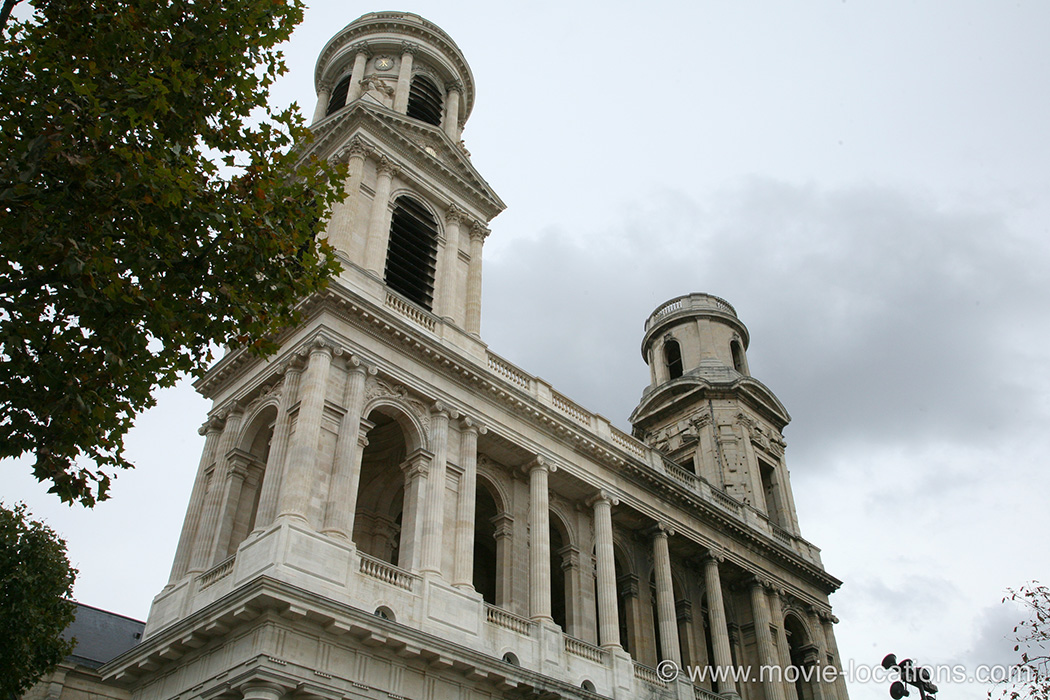
The church in which Silas searches for the ‘keystone’ is Église Saint-Sulpice, Rue St-Sulpice. Although the real exterior is seen, the interior was digitally recreated in the studio using green screen technology. The brass meridian line is real enough, a bit of scientific apparatus installed by the Paris Observatory in the 18th century, but it was never known as the ‘Rose Line’, and has nothing to do with ‘pagan’ temples.
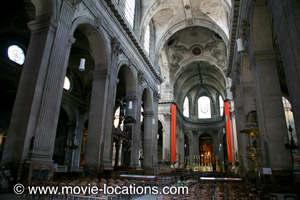
The letters P and S in the small round windows at both ends of the transept refer not to the dubious ‘Priory of Sion’, but of course to Peter and Sulpice, the patron saints of the church. It is true, however, that this is the church in which the Marquis de Sade was christened.
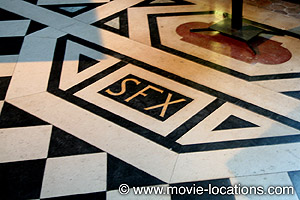
And what do conspiracy theorists make of the marble inlay beneath the Turin Shroud chapel, which reads simply ‘SFX’? Could this mysteriously predict the church's digital recreation for the film? (only the truly unimaginative would claim some prosaic association with St François-Xavier).
And so what if Opus Dei doesn’t have monks? I think we left the real world behind a while ago, when it took a Harvard professor to unscramble the kind of anagram you might face in your local paper’s Quick Crossword.

Two separate English locations stand in for ‘Castel Gandolfo’, the Pope's summer residence overlooking Lake Albano near Rome, in which the sinister council meets.
The exterior, with a bit of CGI, is Belvoir Castle, Gothic Revival home of the Duke and Duchess of Rutland, about seven miles west of Grantham in Leicestershire. No stranger to the screen, Belvoir (pronounced ‘beaver’) is also seen in Barry Levinson’s Young Sherlock Holmes, Merchant-Ivory’s The Golden Bowl, and as ‘Buckingham Palace’ in both The Young Victoria and King Ralph. Its kitchens featured in Jan de Bont’s splurgy 1999 remake of The Haunting.
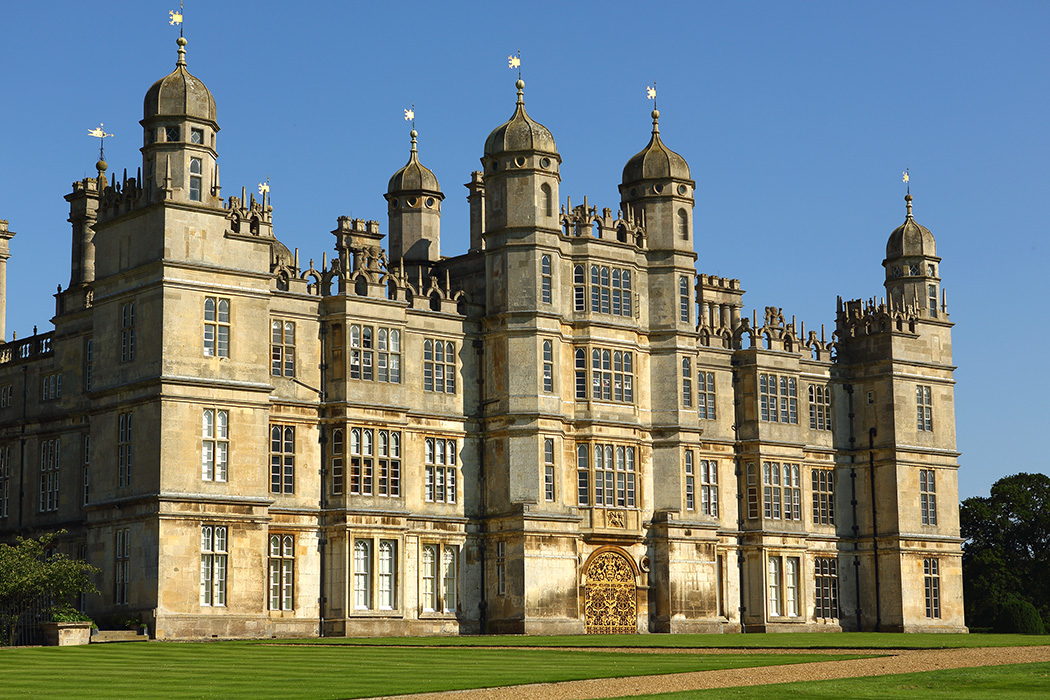
‘Gandolfo’s’ imposing interiors were filmed in Burghley House, Stamford, Lincolnshire, which also supplied the garage at ‘Chateau Villette’, where Teabing and Langdon are pursued by the police, as well as Saunière’s retreat in the flashback scenes.
The house’s extravagant – and rather un-Papal – murals can be seen again adorning the home of Lady Catherine de Bourg (Judi Dench) in the 2005 film of Pride and Prejudice.
Burghley is also featured in the Merchant-Ivory film of The Golden Bowl (but was cut from the final version of Elizabeth, The Golden Age).
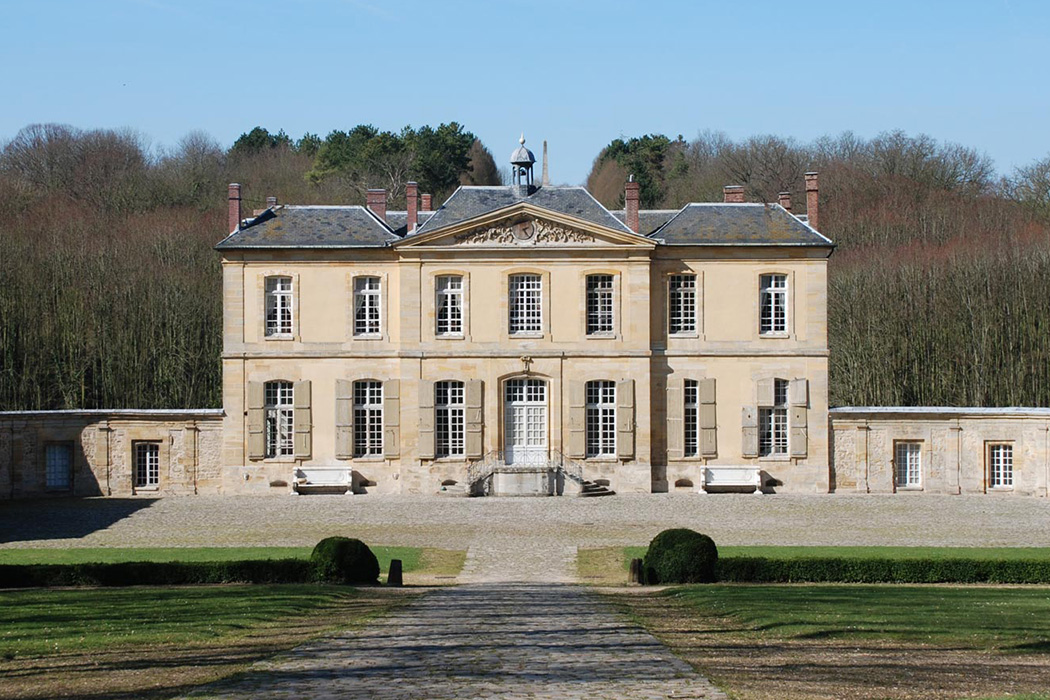
The estate of eccentric English Grail-obsessive Leigh Teabing (Ian McKellen), to which Langdon and Neveu flee, is Chateau de Villette, a 17th century chateau set in a185-acre estate at Condécourt, about 27 miles northwest of Paris. You can stay here, but there are several Chateaux de Villette in France, so check you have the right one!

The island of Malta was used for the historical flashbacks to the Knights Templar at the Crusades; while the Knights' meeting with the Pope in the ‘Vatican’ was filmed in Winchester Cathedral, Winchester, Hampshire – another location used for Elizabeth, The Golden Age. As Jane Austen fans will already know, this is where the author of Pride and Prejudice and Sense and Sensibility is buried.
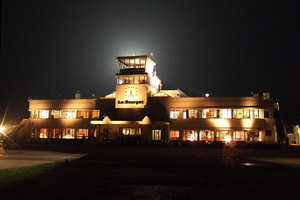
‘Le Bourget’ airport, from which the trio flee France, is the listed 1936 art deco Terminal Building of Shoreham (Brighton City) Airport, Shoreham-by-Sea, West Sussex, the oldest licensed airfield in the UK. About seven miles west of Brighton, there are outside viewing areas and a Visitor Centre, at which you can arrange a guided tour.
The flight isn't too long. A short hop and the plane lands at Biggin Hill Airport, Bromley, in South East London.
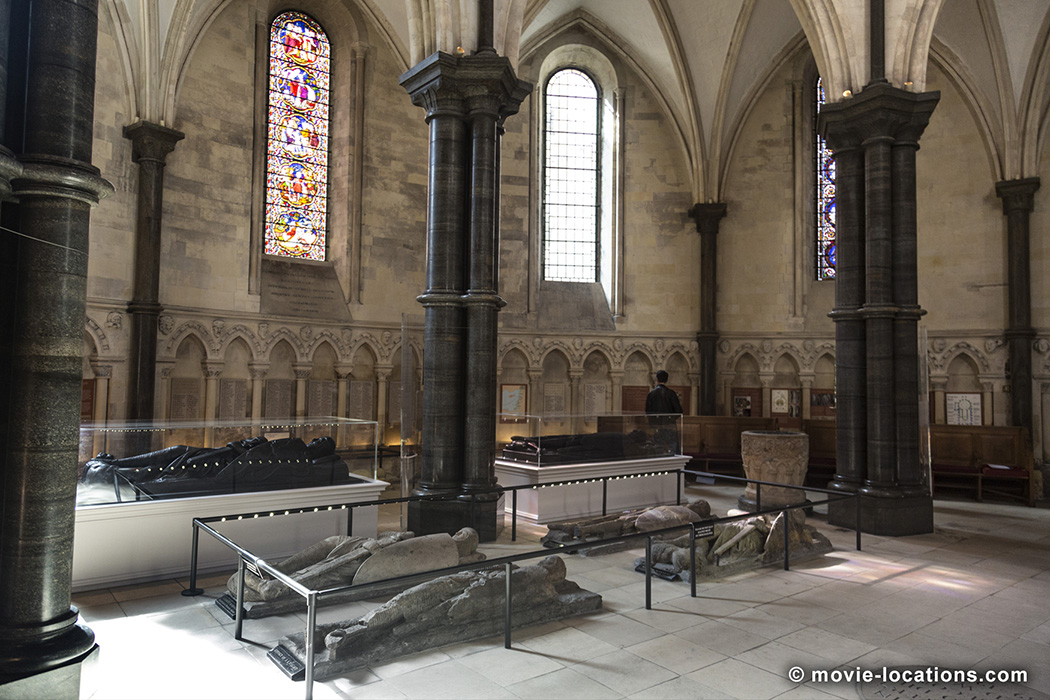
In London, Langdon and Neveu search among effigies for the tomb of a knight at Temple Church, Inner Temple Lane. The church of Inner and Middle Temple, two of England’s four Inns of Court – ancient societies of lawyers, it was consecrated in 1185 and, yes, it really was the London headquarters of the Knights Templar, the order of soldier monks founded to protect pilgrims travelling to and from the Holy Land.
Like all Templar churches, it follows the circular design of the Church of the Holy Sepulchre at Jerusalem, supposedly raised over the site where Jesus was buried.
The fake ‘teacher’ is poisoned alongside the Thames at Blackwall, opposite the O2 – the former Millennium Dome.

The slightly sinister Opus Dei ‘safe house’, with its bricked-up windows to which Silas is taken, has no connection, of course, with the organisation. It’s a private home at 207 Gloucester Terrace at Orsett Terrace, W2, just a few minutes northwest of Paddington Station.
Realising his misinterpretation of the clue ‘A knight interred by A Pope’, Langdon heads off to the tomb of Sir Isaac Newton in Westminster Abbey, Broad Sanctuary, SW1.
The exterior of the Abbey is real enough, with good-natured compliance from sightseers as the raving Teabing is carted away. Filming inside the Abbey was a no-no from the word go. Apart from the massive inconvenience that would have been involved, the book had been dismissed with icy politeness as as “Theologically unsound”.

Packed with history, though, you won’t want miss the Abbey’s awesome interior. Despite appearances, the this is not a cathedral, but a church – although owned by the royal family (which explains why it survived King Henry VIII’s ruthless assault on monastic buildings during the Reformation).
The oldest parts of the Abbey date from 1050, and in the vestibule of the Chapter House you can see the oldest door in Britain. Since 1066, the coronation of every English monarch has been held here, and among the 3,000 people buried within its precincts are no fewer than seventeen monarchs, including St Edward the Confessor (who was king from 1042 to 1066), Edward I, Richard II, Henry V (the young hero of Agincourt immortalised in the Shakespeare play), Henry VII, Elizabeth I (another favourite for fictional treatment) and her half-sister Mary I. Here also is the vault where Charles II, William III and Mary II and Queen Anne lie, although none of these has a monument. The last monarch to be buried in the Abbey was George II, in 1760.
Poets' Corner, one of the Abbey’s best known features, can be found in the South Transept. Geoffrey Chaucer, the first poet to be buried here, achieved this distinction not as author of The Canterbury Tales, but because he had been Clerk of Works to the Palace of Westminster. Nevertheless, after Edmund Spenser was laid to rest nearby in 1599, the two tombs launched a tradition.
Poets since interred include John Dryden, Alfred Lord Tennyson, Robert Browning and John Masefield; alongside writers Dr Samuel Johnson, Charles Dickens, Richard Brinsley Sheridan, Rudyard Kipling and Thomas Hardy. Non-poets include Messiah composer George Frederic Handel, and actors David Garrick and Laurence Olivier (who directed and starred as Henry V in the 1944 film).
But if you’re a Da Vinci Code enthusiast, you’ll make a bee-line for the choir screen in the Nave, with its monument to Sir Isaac Newton, in an area known as Scientists Corner. Newton rests in the company of Charles Darwin, explorer David Livingstone, architect Sir Charles Barry, engineer Thomas Telford and the first Labour Prime Minister, Clement Attlee.
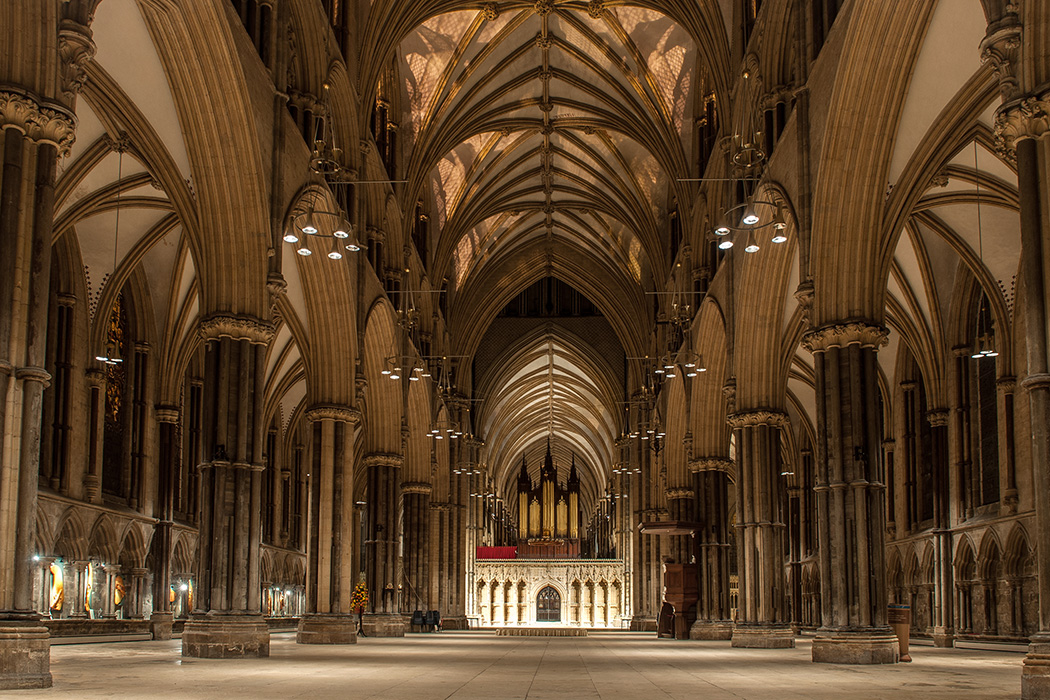
For the film, though, Abbey interiors were shot in Lincoln Cathedral, which was consecrated only shortly after Westminster Abbey in 1092. Lincoln took a more relaxed attitude to Dan Brown’s barmy fantasy and Newton’s tomb was recreated here in all its gilt splendour. Less controversially, the Cathedral also stood in for ‘Westminster Abbey’ in The Young Victoria.
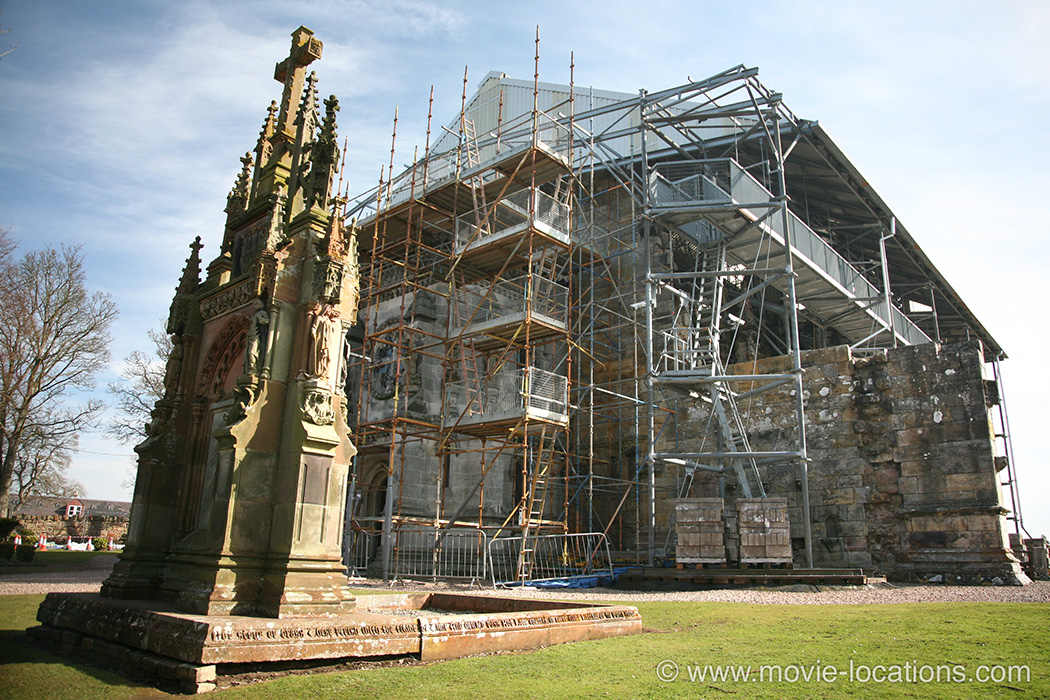
A final clue from the Cryptex leads to Scotland’s Rosslyn Chapel (though another chapel stands in for long shots as Rosslyn was at the time covered by a protective canopy during extensive renovations), Roslin, about ten miles south of Edinburgh, in Midlothian.
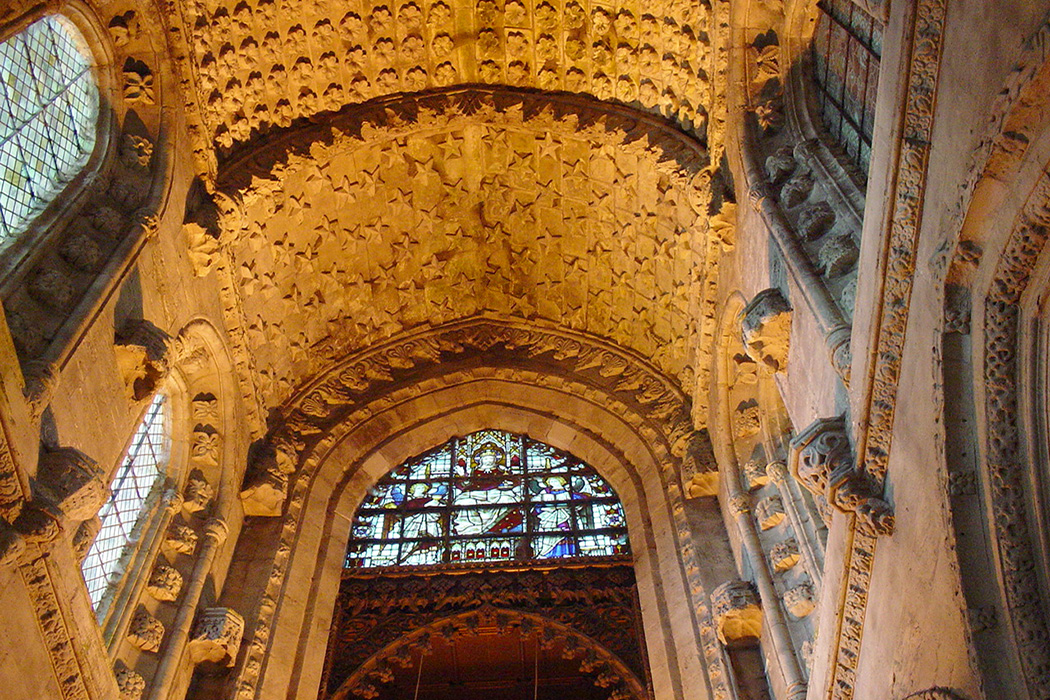
Dedicated in 1450, the astonishing Rosslyn Chapel has a varied history, having fallen into disrepair for centuries, even serving as stables for a while. Among the dazzlingly complex stonework of its Lady Chapel, look out for Masonic symbols, along with carvings of the traditional pagan ‘Green Man’, strange cubes embellished with a code of lines and dots, and – most mysterious of all – images of maize carved 50 years before Christopher Columbus discovered America.
You can descend to the crypt – though it’s unsurprisingly nothing like the one seen in the film.
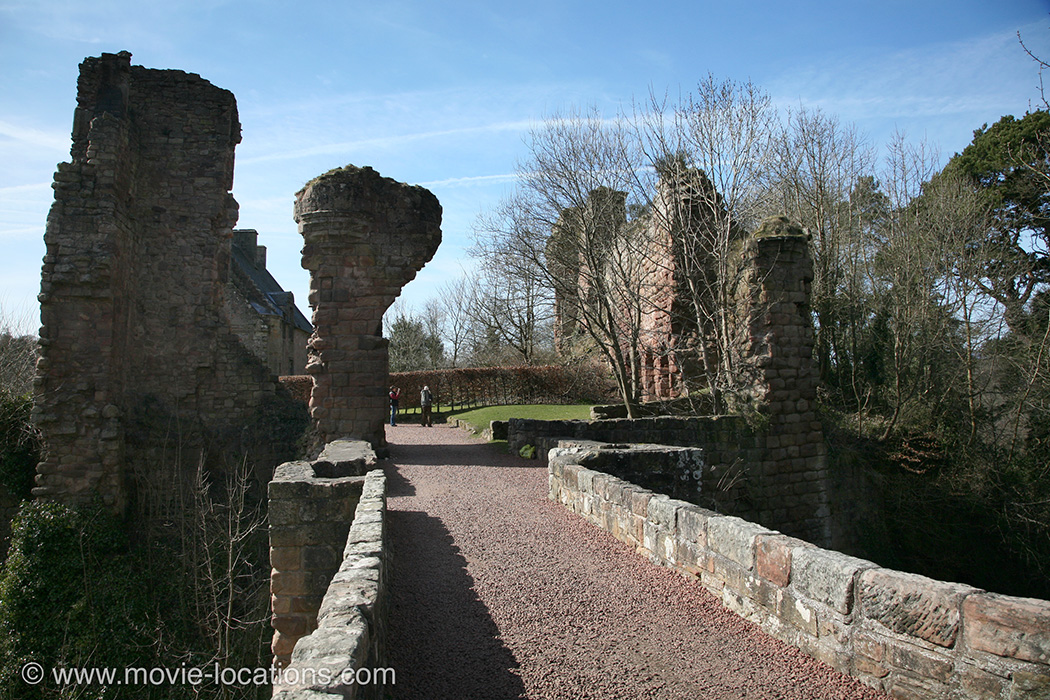
A few hundred yards south of the chapel stand the ruins of the 14th century Rosslyn Castle, where Langdon and Neveu part ways. But there are yet more myths. Legend has it that the castle is home to a sleeping lady who will one day be awakened by a trumpet and reveal the whereabouts of a fabulous treasure. And that’s not to mention the ghostly Hound of Roslin.
If you’re intrigued by all this mystery, you can book accommodation in more modern sections of the castle through the Landmark Trust, a preservation charity, established to rescue historic and architecturally interesting buildings from neglect and to give them new life by letting them out to visitors.
It’s neatly back to Paris for the final sequence, which finds Langdon staying at the Ritz Paris, 15 Place Vendome. With former guests including Ernest Hemingway, Coco Chanel, the Princess of Wales... this is the place to stay in high style if you have the funds. Choosing a career? I just want to say one word to you:
Symbology.





